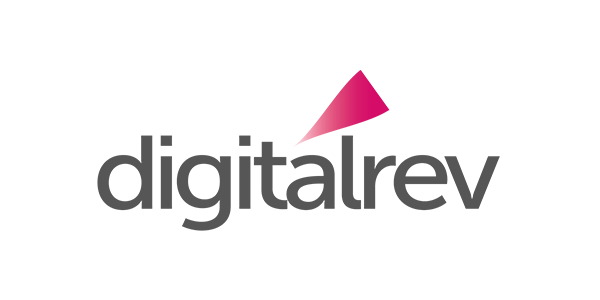Now Sony has company in the category of full-frame mirrorless cameras, albeit not from one of the companies we expected but rather from Leica, in the form of the SL. They’re not exactly meant to be hitting in the same ball park, especially when you bear in mind the difference in price between the two cameras.
There will be a lot of people that will note that the Leica should be the camera with more impressive specifications, simple because it costs more. Not necessarily. After all, Leica products carry a premium for a number of reasons, not just because of the implied quality but also for the exclusiveness and the branding. This comparison looks at if the comparison is a lot closer than one might expect or is the Sony even better in some areas?


Body
With the Leica products, you’d expect nothing but the best, and it looks like the SL will be a beautifully put together piece of metal and glass. The body is milled from a block of aluminium, while the Sony’s body is magnesium alloy. One has to wonder if it’s really necessary to have such a exhuberently-made body when they end up looking kinda similar. Besides, both of them have dust and weather sealing, making them both dependable (and hopefully) tough bodies. Mind you, the SL is packing a higher resolution EVF with higher magnification than the Sony.

Lenses
Leica note on their website that the Leica SL has 145 Leica lenses on offer. There will only be one lens on launch – the 24-90mm f/2.8-4 – with a couple of lenses to follow in 2016. The other 140+ lenses they are referring to are the Leica T, M & R lenses that can be used with an adaptor. Now, as the Sony can use almost all the same 140+ Leica lenses with an adaptor, the Sony clearly has the advantage, even though they don’t have many native lenses, they still have more.

Still Images
Both don’t have a low pass filter but there is a big difference in megapixels. Sony were on 24-megapixels with the first generation of a7 cameras (the a7), so the sensor in the SL is quite a modest bit of tech. 24-megapixels is more than enough for most people right now but if we are talking about the details, we would guess that the a7R II comes out on top. With that back-illuminated sensor, the Sony can go to higher ISOs than the Leica also.

Video
This is actually quite a surprise from Leica, in that they are offering 4K video with one of their cameras. Even Canon and Nikon haven’t offered that with any of their consumer level cameras. What’s more, the Leica can take 120FPS video in full HD! The SL has the sockets – headphone and mic – that a videographer wants too.

Performance
Interestingly, Leica is claiming the Leica has the fastest autofocusing of any camera. That is quite a claim considering it uses only contrast detection AF, which one might think would be slower than the 399-point ‘Fast’ Hybrid AF of the Sony a7R II. Only time will tell if the claim is true.
Final Thoughts
The SL is hot news, mainly because it means Sony is not alone in being the ones to offer a full-frame mirrorless camera. Whether the SL becomes a big hit is uncertain, and sadly, it possibly won’t be due to the price and how Leica is aimed more towards a market with a higher disposable income but we’re glad to see it nonetheless. Perhaps now that means more manufacturers will jump on the bandwagon, and that is surely a good thing.
| Leica SL | Sony a7R II | |
|---|---|---|
| Sensor | 24MP Full-Frame CMOS Sensor without Low Pass Filter | 42MP Back-Illuminated Full-Frame CMOS Sensor without Low Pass Filter |
| In-Body Stabilisation | X | |
| ISO Range | ISO 50 to 50000 | ISO 50 to 102400 |
| Image Format | 8-Bit Jpeg, 14-Bit DNG RAW | 8-Bit Jpeg, 14-Bit RAW |
| Video Format | 4K (4096 × 2160) @ 24 fps; 4K (3840 × 2160) @ 25 and 30 fps; 1080 @ 24, 25, 30, 50, 60, 100 and 120 fps; 720 @ 24, 25, 30, 50, 60, 100 and 120 fps | 4K: 3840 x 2160 (25p/100Mbps, 25p/60Mbps), HD: 1920 x 1080 (50p/50Mbps, 25p/50Mbps), 1280 x 720 (100p/50Mbps), 1920 x 1080 (50p/28Mbps/PS, 50i/24Mbps/FX, 50i/17Mbps/FH, 25p/24Mbps/FX, 25p/17Mbps/FH), 1920 x 1080 (50p/28Mbps, 25p/16Mbps), 1280 x 720 (25p/6Mbps) |
| Mic Input | ||
| Headphone Socket | ||
| Autofocus System | Contrast AF | Fast Hybrid AF (Phase Detection & Contrast Detection): 399 points (phase-detection AF) |
| Continuous Shooting | 11FPS | 5FPS |
| Flash Sync | 1/250s | 1/250s |
| EVF | SXAG 4.4MP, x0.80, 100% Frame Coverage | XGA OLED 2.4MP, x0.78, 100% Frame Coverage |
| LCD Screen | 2.95″ Touch Back light LED with Anti-fingerprint and Anti-scratch coating | 7.5 cm (3.0-type) TFT drive, 1.2-Million Dot, Tilting Screen |
| Wi-Fi | ||
| NFC | X | |
| GPS | X | |
| Size | 147×104×39mm (W×H×D) | 126.9 x 95.7 x 60.3 mm (WxHxD) |
| Weight | approx. 771/847g (without/with battery) | 582 g (Body Only) / 625 g (With battery and media) |
| Battery Life | Approx. 400 shots | Approx. 290 shots (viewfinder) / approx. 340 shots |
| Body Material | Milled Aluminium | Magnesium alloy, High rigidity engineering plastic exterior |
| Dust/Weather Sealing | ||
| Price | $7,450 | $2,819 |

